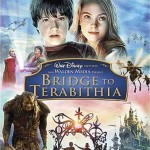We were graciously given the opportunity to interview WETA’s Matt Aitken for their work on Bridge to Terabithia. When I got the call, I wasn’t ready to record it, but went ahead with the interview anyway. Who am I to pass up an interview with someone from WETA? Anyway, due to being unable to record it, I took notes.
I asked him some questions about how they’d go about creating creatures that don’t exist. Primarily, they’d look at actual creatures, and copy certain elements from them. Motion capture is something that they’ve gotten better with as well, since The Lord of the Rings. They improved on everything even since King Kong. They do a good mixture of key-framing and motion capture when animating creatures in each picture. Key-framing is when you take two frames of animation and the computer fills in the frames between. For example, if you had a character throwing a ball, you’d have one frame with the the ball in leaving the character’s hand, and the next would be where the ball is going to change direction, say on a bat. The computer would put the ball where it needs to be in every frame between those two frames. It’s hard to really get a grasp without seeing it though.
Here’s what he told me about creating the creatures:
“For the insect creatures, we spent the largest part of the time on those guys making their wings look great, like little hummingbirds. You want them to have that real intensity to the speed to which their wings move. That doesn’t just happen automatically when you create those guys on the computer. Of course, with the squogres and the hairy vultures the fur is a huge part of their character, and for us it is the most complex thing about them. Their fur has to be styled and created in a way that looks natural and believable. It looks complex, but it also has to move in a natural way. If you’ve got a squogres who is bouncing off a tree, then his fur needs to demonstrate the shock of that impact. If it looks too stiff it looks like he’s used too much hairspray. It’s a very unnatural look. When you are talking about a creature with millions and millions of little hairs, calculating this dynamic movement on each of those hairs is a very complex process.
“The computer does most of the work for us, but it’s just the world that we live in, you know. We have to offer this very fine level. We will look at one shot over and over again for half an hour and discuss various different ways we can change it. We get to know these shots very well.”
Beyond that, he said that working for WETA is a dream. It’s a family that he loves to come back to every day. Up next for them is James Cameron’s Avatar, for which they’ll be creating a number of creatures in the same way that they did for Bridge to Terabithia.
I asked him about creating whole new worlds, and he said that doing so is part of what makes the project so much fun. They were able to create a world that wasn’t real, but was lived in. A place that was magical with things that we could only dream of. For Terabithia, that was a key element. And it took them nearly a year to do so.
“I think we worked on Terabithia in total for about nine months. There is really three phases to that. We were involved in the filming so that when the production is on location or on the set filming scenes that are going to have visual effects. We are very proud of that process and helping to make sure the place where it is filmed is going to work in the context with the digital work we need to do on the creature later.
“We are also in the background while that is going on, we are doing what we call digital preproduction, which is the process of building these creatures and getting everything ready for use in the shots. We’ve already got the concept artwork from the production. We have got a target that we are moving towards there. That can take more time than anything else. We spend at least as much time building the creatures as we do actually staging them in shots. It can take several months to build one of these creatures. We have a small team of people working for several months getting these creatures built and developing their styles and movements, their animation styles, working out run cycles, that sort of thing.
“Then the work that we get in with the shots is where we finish our task and producing what we call a visual effects shot, a clip in the film, which has some creature, or some other visual effects aspect to it is ultimately what we are delivering to the production.”
Thanks for the interview, Matt, and for the wonderful opportunity from Disney!
Paul Martin with a little help on the direct quotes from comingsoon.net (I couldn’t type fast enough to keep up, but did manage a lot of it).


Be the first to comment